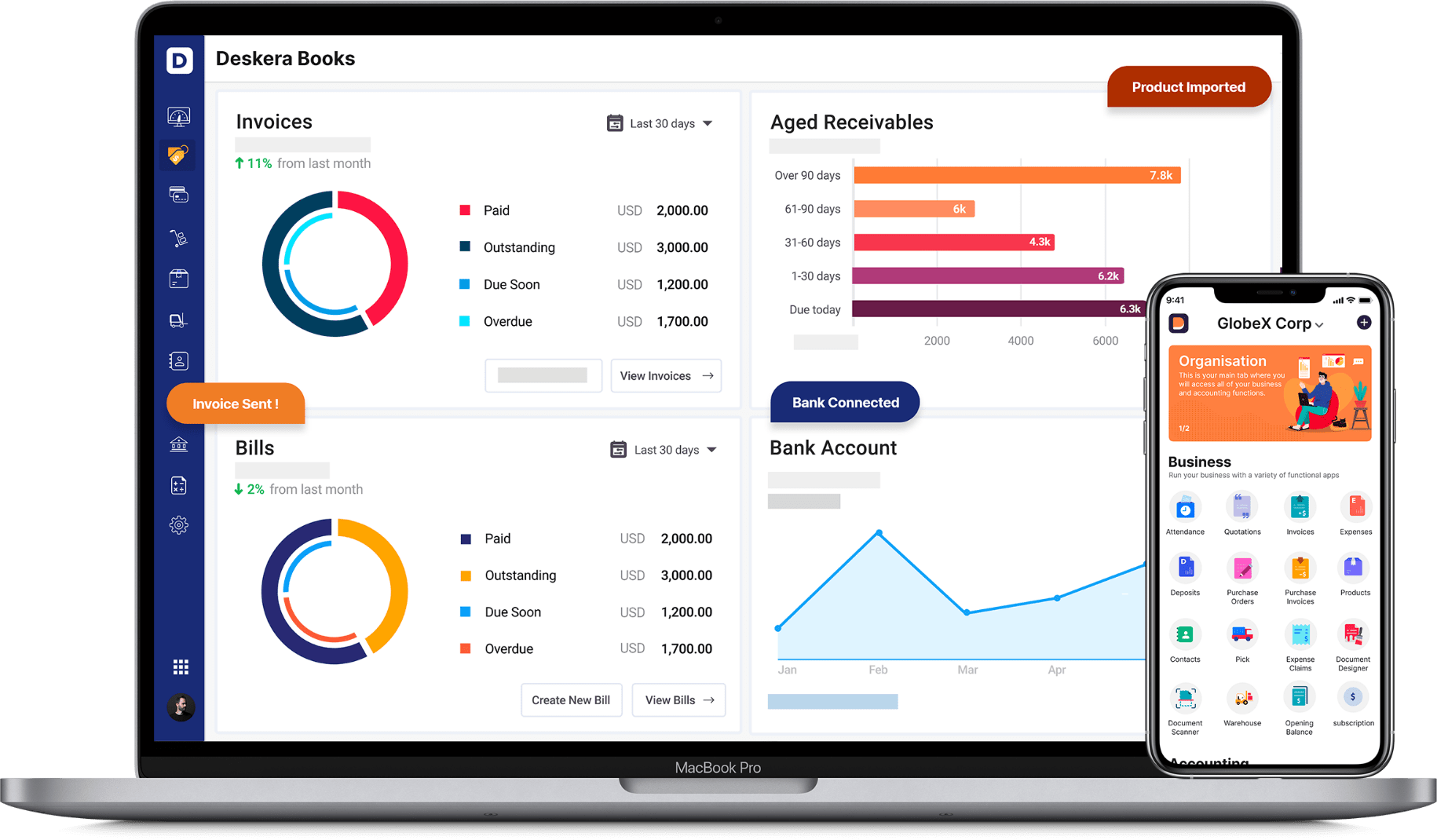The acid test ratio, also called the quick ratio, is a type of accounting ratio. It is one of five important accounting ratios that are calculated based on a company's financial reports and are used to determine the profitability and efficiency of the company.
Accounting ratios are a subset of financial ratios, and understanding the basics of what they are and why they are important will help you better understand the acid test ratio.
In this article, we go through an overview of all accounting ratios and then delve deeper into understanding everything about acid test ratios. We will be covering:
- What is an accounting ratio
- Types of accounting ratios
- Gross profit margin
- Operating profit margin
- Debt-to-equity ratio
- Dividend payout ratio
- The acid test ratio or the quick ratio
- What is an acid test ratio
- Calculating acid test ratio
- What information do you get from the acid test ratio?
- Acid test ratio example & calculation
- What is the difference in implication between the current ratio and the acid test ratio?
What Is an Accounting Ratio?
A company's financial statement contains vital income and expenditure details like its net sales, operating costs, depreciation, etc.
An accounting ratio is derived by dividing two line items from a company's financial statement. For example, you can divide the gross profit and total sales to get a company's gross profit ratio which is an indicator of how well a company is managing its production costs (COGS).
Each accounting ratio gives different information and represents a company's operational efficiency in that particular area. The gross profit is a measure of a company's profits after deducting the cost of goods sold from total sales. The gross profit margin (or ratio), therefore, indicates in percentage how high or low the cost of production was and how much it has impacted profits. Similarly, each accounting ratio can be analyzed to judge different areas of operations and deduce efficiency.
You can manage your accounting via cloud platforms like Deskera

Types of Accounting Ratios
Let us look at the different kinds of accounting ratios:
Gross Profit Margin
A company's gross profits are derived by dedicating the cost of goods sold from its overall sales earnings for the given time period. The ratio of gross profit to sales is the gross profit ratio, or the gross profit margin, and is denoted as a percentage.
For example, if a company earned $300,000 in a financial year and the COGS for that year was 100,000, its gross profits are $300,000 - $100,000 = $200,000. The gross profit marking in this example will be ($200,000 ÷ $300,000) x 100 = 66.66%.
Gross profit margin is an important indicator of company performance in terms of revenue and profitability, and in terms of manufacturing expenses. Since the only deduction to calculate gross profit is the COGS and no other operating costs, the gross profit margin indicates how efficiently the company is using its labor and resources for manufacturing products.
Operating Profit Margin
The operating profit margin is similar to the gross profit margin.
Operating profits are calculated by deducting all expenses except the cost of debt and taxes. The ratio of operating profits to sales gives you the operating profit margin in percentage. Just like gross profit margin, the operating profit margin helps measure a company's profitability and ability to manage expenses optimally.
Debt-To-Equity Ratio
The debt to equity ratio, or D/E ratio, is an important financial measure and is calculated by dividing a company's debt by its equity. If a company has total debt of $200,000 and quite equal to 100,000, its debt to equity ratio is 2:1.
The implications of D/E ratio are what it indicates, which is how much of the company's operations are being financed by debt as opposed to being financed by its equity, or its internal funds. It's evident that a company wants to have a low D/E ratio.
Dividend Payout Ratio
The dividend payout ratio is the percentage of earnings distributed to shareholders as dividends. It is calculated as the ratio of the total amount of dividends paid out to the net income of the company for that time period.
If a company's net income is $200,000 and the total dividends paid to shareholders is $70,000, the dividend payout ratio is ($70,000 ÷ $200,000) x 100 = 35%. The remaining 65% of profits are retained by the company and is called the Retention Ratio.
The dividend payout ratio indicates how much of the profits were disbursed as dividends, which in turn indicates how much profits have been retained and can be used for business operations.
The Acid Test Ratio or The Quick Ratio
Lastly, the acid test ratio for a company is the measure of its ability to financially meet immediate and short-term commitments. It represents the company's short-term liquidity capacity.
We cover everything you need to know about the acid test ratio in the following sections of this article.
What Is An Acid Test Ratio?
The acid test ratio, or quick ratio as it is more commonly called, is a measure of the liquidity of a company. It represents a company's ability to cover current liabilities with the current assets available. The acid test ratio is calculated using only the most liquid current assets, ideally ones that can be liquidated for cash within 90 days or less.
The acid test ratio is often confused with the current ratio, also called the working capital. The working capital available for a company is the difference between the company's current assets like cash or cash equivalents, inventory, short-term deposits, etc., and its current liabilities. If you understand this correctly you'll realize that the resulting value in dollars is the fund leftover after paying all liabilities. A positive number indicates the company has the funds to pay back its liabilities if it had to. The net working capital compares current assets to current liabilities and this sounds very similar to the acid test ratio.
The difference between the acid test ratio and working capital, however, is in selecting the current assets for calculation. For an asset to be considered a current asset, it should be liquidated within a year, and here lies the difference. All current assets are considered when calculating working capital, but only those current assets that can be liquidated within 90 days are considered when calculating the acid test ratio. Current assets like inventory are sometimes not included if they cannot be liquidated within 90 days.
The acid test ratio is the ratio of current assets (that can be immediately liquated) to current liabilities. It represents an absolute number. If this is greater than 1, it means the value of current assets is higher than the value of current liabilities and the company can pay off all liabilities if it needs to.
Calculating the Acid Test Ratio
As we mentioned in the previous section, the acid test ratio is calculated by dividing the current assets by the current liabilities.
Acid test ratio = (Cash + Cash Equivalents +Marketable Securities+Accounts Receivable) ÷ Current liabilites
The sum of cash, cash equivalents, marketable securities, and accounts receivable forms the most liquid current assets.
In general, other current assets are excluded from this calculation, especially inventory. Product companies, like retail for example, generally store a high value of inventory, and including this in the calculation of the acid test ratio could distort the result and give wrong insights.
What Information Do You Get From The Acid Test Ratio?
If you have understood the difference between the acid test ratio and working capital you will see that the acid test ratio is a measure of a company's ability to immediately liquidate current assets to pay off its current liabilities.
The acid test ratio gives two key insights - does the company have the funds to pay off liabilities, and is the company being profitable (since it has a surplus of assets versus liabilities). The value of the acid test ratio will move these two insights in the positive or negative direction.
Ideally, every company would like to have an acid test ratio of more than 1 and you would assume that the higher the acid test ratio, the better. But this is not always the case.
Yes, an acid test ratio of less than 1 indicates that the company does not have enough current assets to pay off its liabilities immediately, but that does not have to be a risky situation for all companies. It really depends on the industry you are in.
For example, a retail company could have a low acid test ratio, maybe even less than 1, but they generally also have a huge number of fast-moving inventory that is bringing in revenue and this creates liquid cash that will then become a current asset. A retail company with a low acid test ratio will still be considered financially stable.
If you consider a technology company, on the other hand, the picture is reversed. Since IT companies (in general) earn lumpsum amounts, they will have a high cash value in their current assets and will also have a high acid test ratio. This can, in turn, be a problem when investors analyze the financials because they can demand higher dividends with the argument that the company has surplus cash.
You can generalize the acid test ratio by saying its indication of risk or safety depends on the industry, but a ratio of greater than 1 is always the aim.
Acid Test Ratio Example & Calculation
Consider the following income statement:
| Cash and cash equivalents | 50,000 |
| Short-term marketable securities | 35,000 |
| Accounts receivable | 22,000 |
| Inventories | 45,000 |
| Vendor non-trade receivables | 15,000 |
| Other current assets | 12,000 |
| Total current assets | 179,000 |
| Accounts payable | 45,000 |
| Long-term debt and other liabilities | 66,000 |
| Total current liabilities | 111,000 |
The acid test ratio is calculated by considering the current assets cash and cash equivalents, marketable securities, accounts receivable, and vendor non-trade receivables, and the current liabilities. So:
Acid test ratio = (50,000 + 35,000+22,000+15,000) / 111,000 = 1.1
If you notice, we have included vendor non-trade receivables in this calculation, but this was not mentioned earlier when discussing the formula of the acid test ratio.
What you count as current assets that can be immediately liquidated is subject to your company. In this example, the vendor non-trade receivables are amounts that vendors owe to the company, and are expected within 90 days, so they form current assets that can be immediately liquidated.
What is the Difference in Implication Between the Current Ratio and the Acid Test Ratio?
Yes, the current ratio and acid test ratio both seem to denote the company's ability to pay liabilities or debts, but the acid test ratio takes on a more urgent state.
Since the acid test ratio only uses current assets that can be immediately liquidated, it indicates a company's ability to arrange funds to pay of debts immediately, if the need to pay them off arises. The current ratio provides a longer timeframe, of up to a year.
That is where the term 'acid test' ratio or 'quick' ratio comes from. It gives analysts an idea of how much liabilities can be 'quickly' paid off.
Depending on the company's situation and the type of financial analysis being performed, you will either select the acid test ratio or the current ratio to indicate the company's financial status and ability to pay off debts.
Key Takeaways
- The acid test ratio, or quick ratio as it is more commonly called, is a measure of the company's liquidity
- The acid test ratio indicates if the company has enough short-term current assets to cover all of its short term liabilities
- The acid test ratio is calculated by dividing current assets (that can be liquidated within 90 days) by current liabilities. The result is an absolute number
- An acid test ratio of 1 or more is preferred, but it is subjective and some industries can have a low acid test ratio and still be financially safe
- The acid test ratio is similar to the current ratio (also called net working capital) but differs in the urgency of liquidating assets. The acid test ratio only considers current assets that can be immediately liquidated
- Knowing a company's acid test ratio will give you an idea of how much surplus fund is available to pay off debts, and this can also indicate profitability
Related Articles











